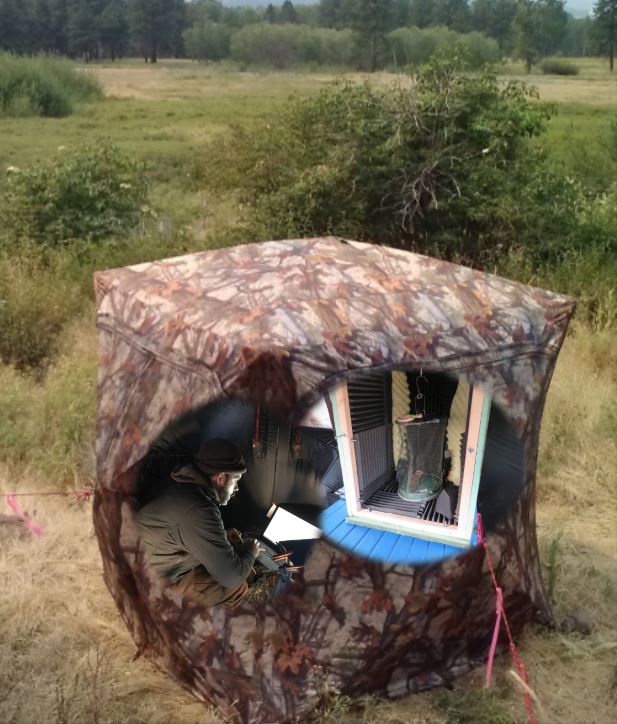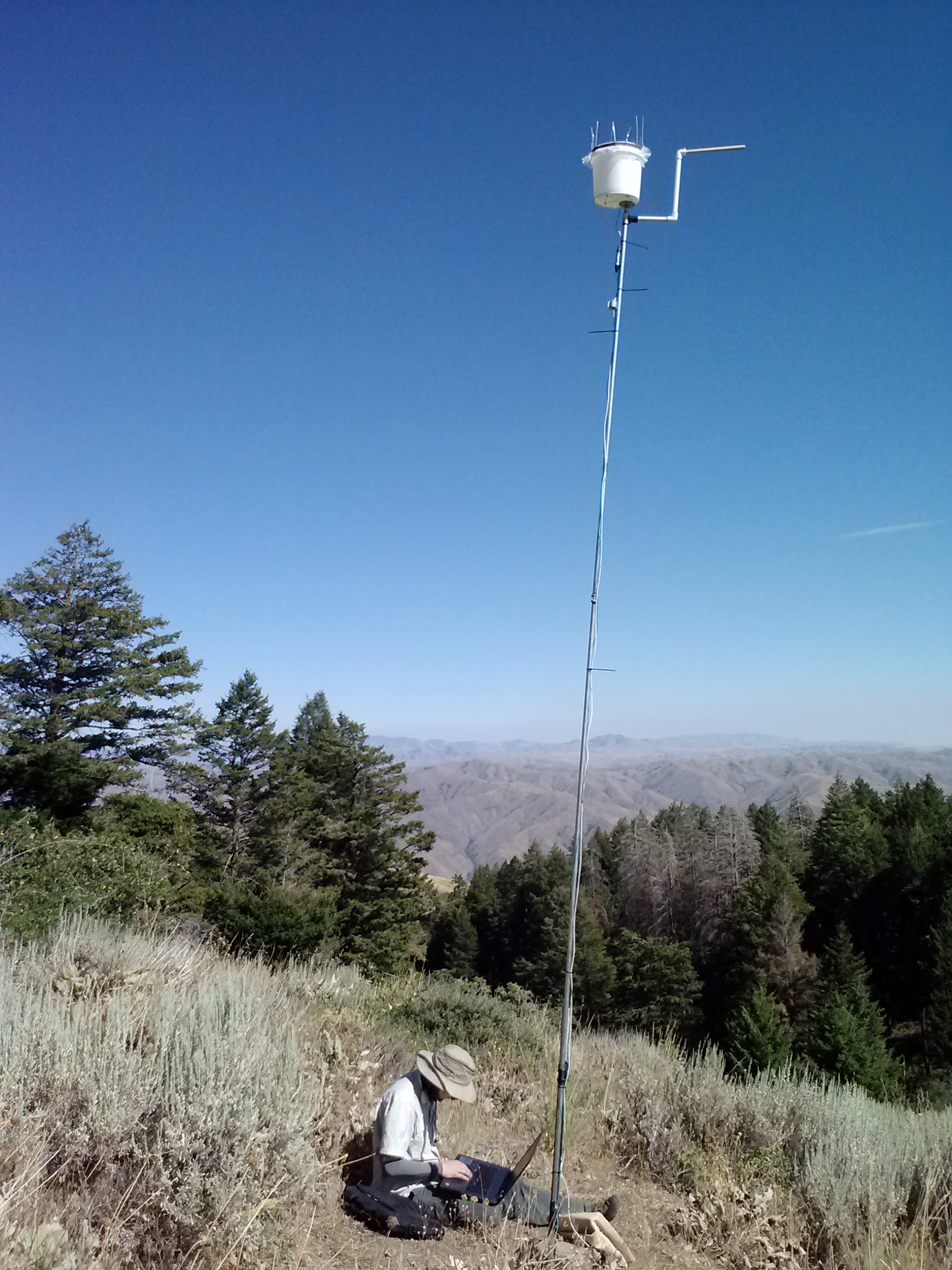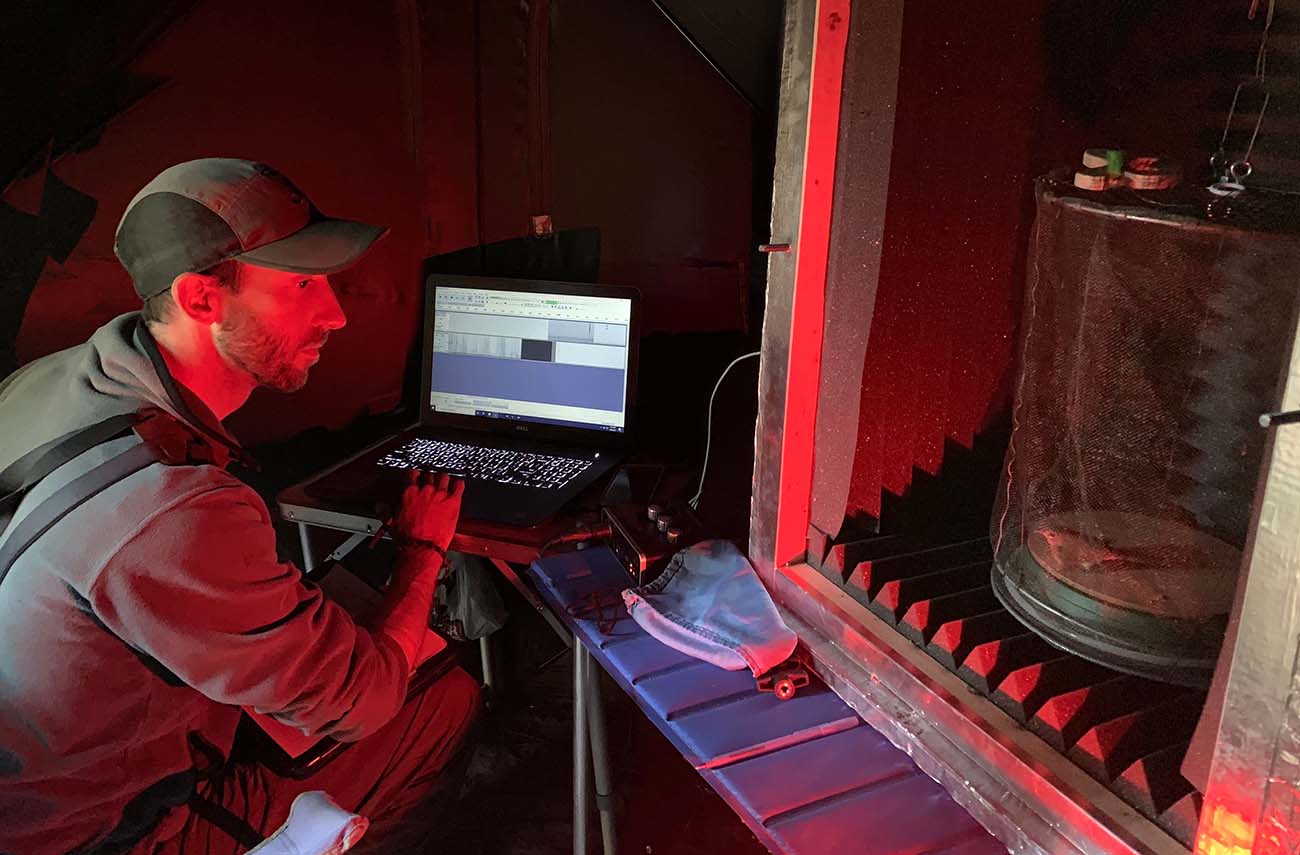By Christian Meny
Imagine warblers and sparrows flying under the stars at night and communicating using high-frequency calls. This is the reality during Fall migration in the Rocky Mountains and beyond. Songbird species emit short (40 -150 milliseconds), mid- to high frequency (3-10 kHz) vocalizations called Nocturnal Flight Calls (NFCs). Recording NFCs, especially in the eastern US, has become a viable method to monitor migrating birds.

But more data, especially isolated NFCs from western species, will improve automated classifications of recordings in the field of bioacoustics. This Fall, biologists at the Intermountain Bird Observatory, in collaboration with and funded by the MPG Ranch in Florence, Montana, spent their second field season contributing to MPG Ranch’s Project Night Flight. Specifically, IBO Biologists recorded NFCs using two distinct methods: by operating a Portable Recording Station (PRS) and by deploying passive Autonomous Recording Units (ARU).

The Portable Recording Station (PRS) is a dark, sound-proof recording studio for birds!
IBO Biologist, Jeremy Halka, and Biological Technician, Matthew Danihel, worked with the bird banding team at IBO’s Lucky Peak Research site to operate the PRS. After banding, birds were placed in the PRS – an acoustically isolated recording booth operated in a dark hunting blind in order to simulate night. Birds in the PRS experience 30 seconds of complete silence, followed by 1.5 minutes of stimulus playback, and then another 30 seconds of silence. In 2019, Jeremy and Matt sampled over 1,000 sparrows and warblers, recording and cataloging various vocalizations from 64 individuals, including true NFCs from 27 of those individuals (birds often elicit multiple calls when being recorded). In two seasons they recorded significant NFCs (90+ total) from Townsend’s Warblers, a native western species that previously had zero or very few actual known NFC recordings. This helped build a basic catalog of migratory vocalization information for this species, among others.

Meanwhile in Montana, IBO Biologist, Christian Meny, joined MPG Ranch’s Bioacoustics Team, and helped to deploy 40+ passive Autonomous Recording Units across the Bitterroot River valley.
The ARUs are essentially common hearing aids, mounted in buckets oriented toward the sky, connected to software programmed to record the night sky (and NFCs) during Fall migration.
The ARU data, in conjunction with PRS data, as well as weather radar images indicating pulses of migrating birds (biomass), drives the use and development of various technologies to pinpoint when, where, and what bird species are migrating during the Fall in the Intermountain West. Project Night Flight, including the 40+ ARUs, may be one of the largest bioacoustics arrays ever to be deployed under one project!
This article is part of our 2019 end of the year newsletter! View the full newsletter here, or click “older posts” below to read the next article.